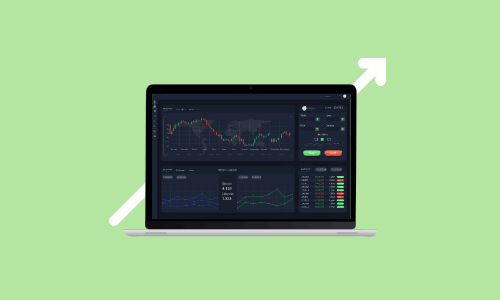
Which Investment Type Typically Carries the Least Risk
If there is one trending topic that almost everyone is steering their ships towards for 2021, it is ‘low risk’. Without risk, there cannot be reward but that doesn’t mean there aren’t opportunities to assist you in getting your investment momentum rolling again, or even for the first time.
2020 handed the financial industry, especially those in top finance jobs, some challenging complexities through all the major events that shook the world, paving a path of uncertainty for many leading into the year ahead. However, it is important to understand that a successful investor is not one who stops and quivers at the fear of obstacles but rather someone who anticipates challenges in good or bad conditions and keeps moving forward regardless. With that said, it doesn’t mean we should armour up, hop on horses, grab swords and charge into investment opportunities with revenge for 2020 in sight, rather, you should focus on the more sensible approach which is protecting your capital whilst allowing it to work for you in cunningly selected financial instruments and portfolios.
What is investment risk?
Risk is an important factor in the assessment of investment prospects. Investment risk can be understood as the probability of losses relative to the expected return. Think of it as reward leveraging off risk. Risk takes many different forms but it is undoubtedly inherent in everything we do. Think about it: getting in your car and driving to the shops involves risk but this risk is managed by abiding the laws of the road and wearing a safety belt. You may be a great driver but the environment you are surrounded by could affect your performance — investments are no different.
Learn Financial Trading
Master the building blocks of financial trading and investment, and learn to react to changes in the market at the most opportune times.

Types of investment risk
There are quite a few examples of investment risk but some of the most obvious include the risk of investments declining in value because of economic developments or other events that affect the entire market (market risk), the risk of loss because your money is concentrated in only one investment type and the risk of a loss in your purchasing power because your investment does not keep up with inflation.
Choosing the right instruments or portfolios to complement a low-risk approach is not as hard as what you may have anticipated. There are quite a few options for you to choose from and we are going to break some of them down below.
Savings accounts
Savings accounts offer a prudent return on your money. Finding a savings account is as easy as searching for a bank online, and you can get a bit more benefit if you’re willing to spend a bit more time going through the rate tables and choosing an option that best suits the amount of capital you have and your preferences.

A savings account is a low-risk option in the sense that you’ll never lose money. Most accounts are government-insured up to a certain amount per account type and per bank, so you’ll be compensated even if the financial institution fails which offers some peace of mind.
Money market funds
These funds are essentially pools of certificates of deposit, short-term bonds and other low-risk investments grouped together in one basket to create diversification without much risk. Gaining access to a money market fund is typically done by approaching brokerages or mutual fund companies.
A big benefit to these funds is that they are liquid, which means you can generally take your funds out at any time without paying exorbitant fees to do so.
Corporate bonds
Profitable companies issue bonds that are available to the public to purchase. These bonds come in relatively low-risk varieties all the way down to very risky ones. This is a great consideration for an investor because it allows you to be more specific in selecting a preferred industry.
It should be known that the market value of a bond can fluctuate as interest rates change but investors can select bonds that mature in the next few years to mitigate the interest rate risk.
Bondholders are more valued than stockholders so if a company goes bankrupt then the bondholders would get their money back before stockholders do.
Learn more about how to invest in the podcast below.
Preferred stock
This type of stock makes regular cash payouts. Preferred bonds are slightly riskier than bonds but certainly safer than stocks and that’s because holders of preferred stock get paid out after bondholders but before stockholders. You can gain access to preferred stock quite easily as they are traded on the stock exchange but if it’s your first time then ensure you get assistance from a broker or analyst to guide you in the right direction.
Choosing the right investment is not an exact science; the final decision that you make on your preference will always be unique to your personal goals. Always ensure you consider your personal preferences when making an investment decision.
To learn more about how to read stock charts like a pro, check out my guide to support and resistance.


